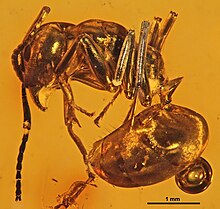
Dolichoderus is a genus of ants found worldwide.
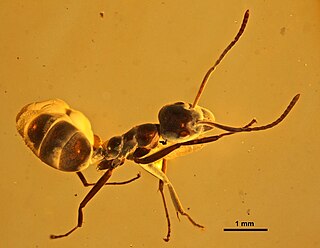
Yantaromyrmex is an extinct genus of ants first described in 2013. Members of this genus are in the subfamily Dolichoderinae of the family Formicidae, known from Middle Eocene to Early Oligocene fossils found in Europe. The genus currently contains five described species, Y. constrictus, Y. geinitzi, Y. intermedius, Y. mayrianum and Y. samlandicus. The first specimens were collected in 1868 and studied by Austrian entomologist Gustav Mayr, who originally placed the fossils in other ant genera until the fossils were reviewed and subsequently placed into their own genus. These ants are small, measuring from 4 to 6 mm in length and can be characterized by their trapezoidal shaped head-capsules and oval compound eyes that are located slightly to the rear of the capsules midpoint, with no known ocelli present.
Dolichoderus angusticornis is a species of ant in the genus Dolichoderus. Described by John S. Clark in 1930, the species is endemic to Australia, found in dry scrub heath in Western Australia and South Australia. Workers are diurnal and foraging during the day and at night.

Dolichoderus antiquus is an extinct species of ant in the genus Dolichoderus. Described by Carpenter in 1930, the fossils of this species are only exclusive to the Florissant Formation.
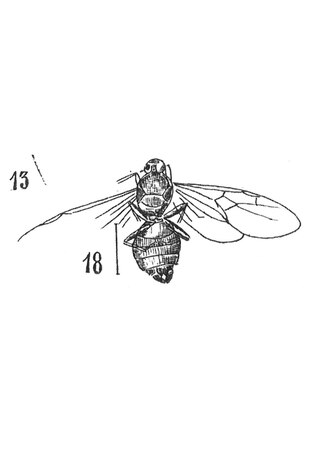
Dolichoderus coquandi is an extinct species of ant in the genus Dolichoderus. Described by Théobald in 1937, the fossils were discovered in France.

Dolichoderus cornutus is an extinct species of Eocene ant in the genus Dolichoderus. Described by Mayr in 1868, the fossils were discovered in the Baltic amber, where a fossilised worker ant was only described, and it is presumed these ants existed at least 40 million years ago.
Dolichoderus curvilobus is a species of ant in the genus Dolichoderus. Described by Lattke in 1987, the species is endemic to Colombia and Costa Rica.
Dolichoderus epetreius is a species of ant in the genus Dolichoderus. Described by Lattke in 1987, the species is only known to be endemic to Venezuela.

Dolichoderus feae is a species of ant in the genus Dolichoderus. Described by Carlo Emery in 1889, it is endemic to multiple countries, notably China, India, Myanmar (Burma) and Thailand.
Dolichoderus ghilianii is a species of ant in the genus Dolichoderus. Described by Emery in 1894, the species is endemic to Brazil, and Peru.
Dolichoderus imitator is a species of ant in the genus Dolichoderus. Described by Emery in 1894, the species is endemic to Bolivia, Brazil and Ecuador.
Dolichoderus intermedius is an extinct species of Miocene ant in the genus Dolichoderus. Described by Mackay in 1993, a fossilised worker was found in the Dominican amber, although the specific locality has not been given.
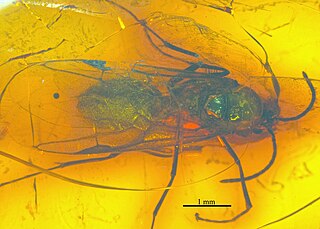
Dolichoderus longipennis is an extinct species of Eocene ant in the genus Dolichoderus. Described by Mayr in 1868, the fossils were discovered in the Baltic Amber.
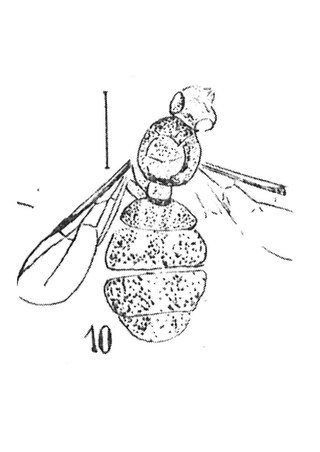
Dolichoderus oviformis is an extinct species of Oligocene ant in the genus Dolichoderus. Described by Théobald in 1937, fossilised males and queens were found in France and have been described.

Dolichoderus sculpturatus is an extinct species of ant in the genus Dolichoderus. Described by Mayr in 1868, a fossilised worker was discovered and described in the Baltic amber.

Dolichoderus taschenbergi is a species of ant in the genus Dolichoderus. Described by Mayr in 1866, the species is endemic to Canada and the United States.
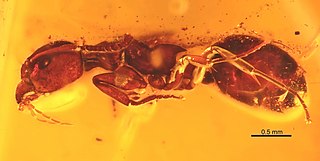
Dolichoderus tertiarius is an extinct species of Eocene ant in the genus Dolichoderus. Described by Mayr in 1868, fossils of a worker, queen and male were discovered and described in the Baltic amber.
Dolichoderus tricolor is a species of ant in the genus Dolichoderus. Described by Emery in 1914, the species is endemic to New Caledonia.

Dolichoderus vectensis is an extinct species of the Oligocene ant in the genus Dolichoderus. Described by Horace Donisthorpe in 1920, the fossils of the species were found in the United Kingdom.

Linepithema fuscum is a species of ant in the genus Linepithema. Described by Mayr in 1866, the species is endemic to South America. Linepithema fucsum was the first species-level name assigned to genus Linepithema by Mayr. It is related to L. angulatum, L. keiteli, L. piliferum and L. tsachila. However, only Linepithema fuscum remains without a worker association and it could be possible that males of Linepithema fuscum actually belong to the workers of L. angulatum. Little is known about Linepithema fuscum due to the scarcity of the collected samples.
